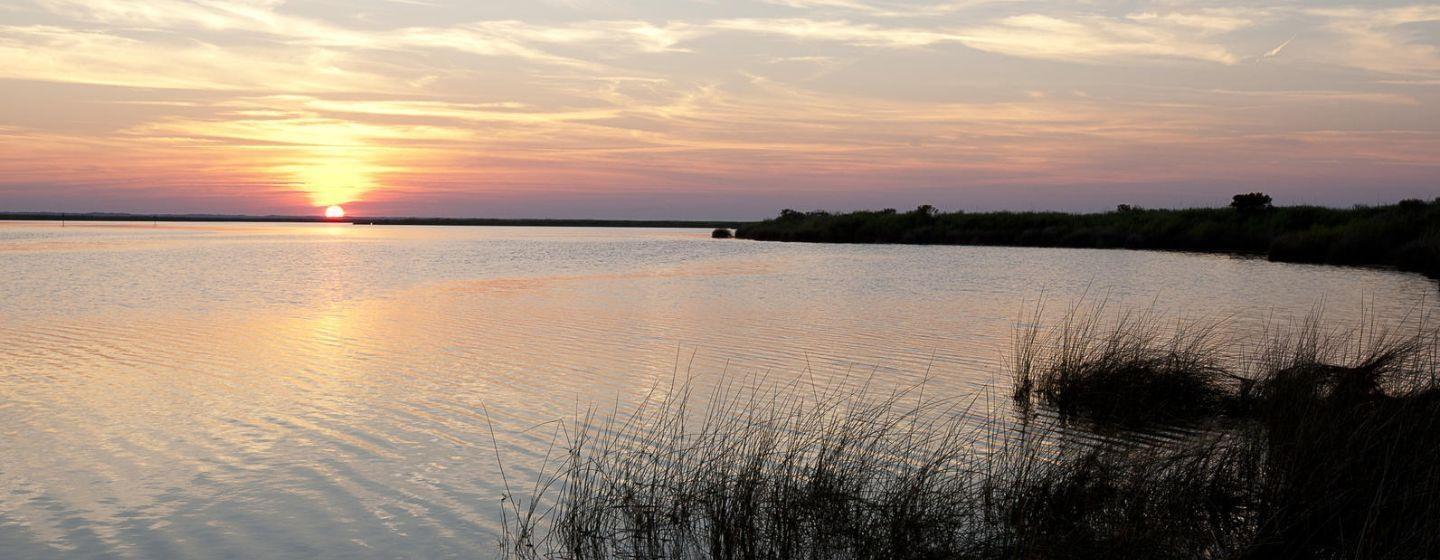An Oyster Sanctuary in the Pamlico Sound Keeps Growing


The last chunks of limestone marl and concrete have sunk to the bottom of Pamlico Sound. The giant barge and excavators have left. And another summer of building the Cedar Island Oyster Sanctuary has passed.
Work on the three-phase project should be finished by next year. Once complete, the sanctuary will total 75 acres (about the area of a large shopping mall). It’s the latest effort by the North Carolina Coastal Federation and the North Carolina Division of Marine Fisheries to restore Pamlico Sound’s oyster population.
Sanctuaries play a critical role in restoring and sustaining the oyster population in Pamlico Sound. Oysters keep the sound healthy by filtering and cleaning its water and providing habitat to fish populations. That, in turn, provides food and jobs as well as supports the local seafood industry.
“It’s a winning project for nature and the region,” said Todd Miller, executive director of the North Carolina Coastal Federation. “The construction project employs local marine contractors, construction crews and rock miners, and it also sustains our marine fisheries.”
The federation and the state have worked together since 2009 to build about 110 acres of oyster sanctuaries, large-scale reefs for oyster larvae that reseed the wild population and cultch-planted areas. Cultch reefs provide a place for spat (baby oysters) to land and grow. Once the shellfish are three inches in length, they can be legally harvested. That usually happens within two to three years of planting.
Together, the sanctuaries and cultch reefs work together to create an interconnected network of oyster reefs in the sound.
North Carolina’s oyster restoration master plan set a goal in 2008 to build 500 acres of protected sanctuary by 2025. There are currently 15 sanctuaries, with Cedar Island being the newest that will contribute to the goal.
“We’ve completed work on 15 sanctuaries, which totals about 320 acres of habitat,” said Jordan Byrum, artificial reef program coordinator with the North Carolina Department of Marine Fisheries. “We plan to build two more sanctuaries and finish building out several others, so with about three more years of construction, we’re on track to reach our goal.”
It takes about 18,000 tons of rock to build 20 acres of artificial reef.
The good news is that the reefs are working.
State biologists spent the summer diving on completed reefs. Researchers have found larger oysters on the reefs, which indicates a thriving population.
“The sanctuaries only make up 6% of all the potential oyster reef population in Pamlico Sound, but they are contributing 20% of the population,” said Erin Fleckenstein, coastal scientist with the North Carolina Coastal Federation. “In addition, the sanctuaries are contributing 25% of all the oyster babies floating around in the sound. That’s a strong percentage.”